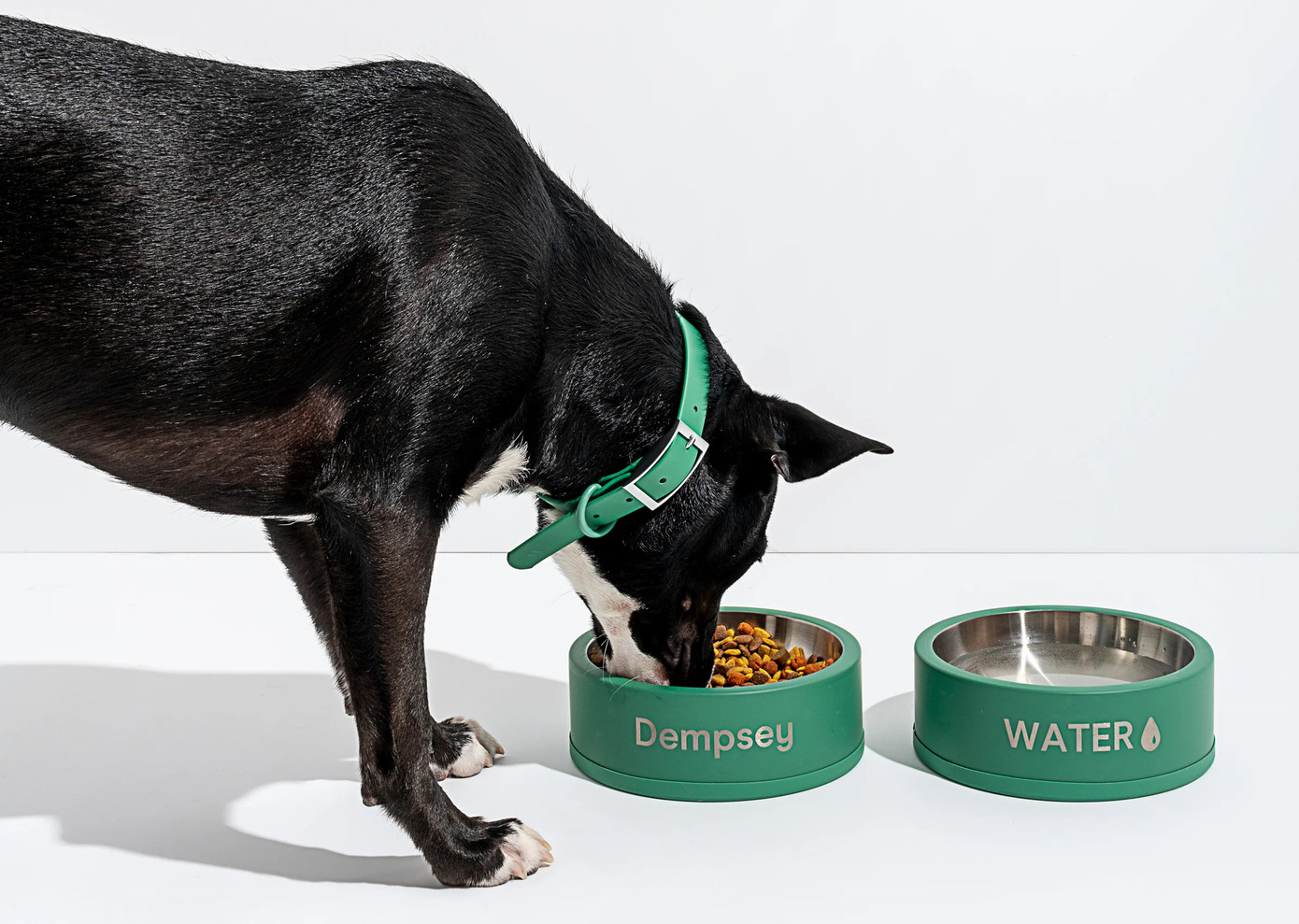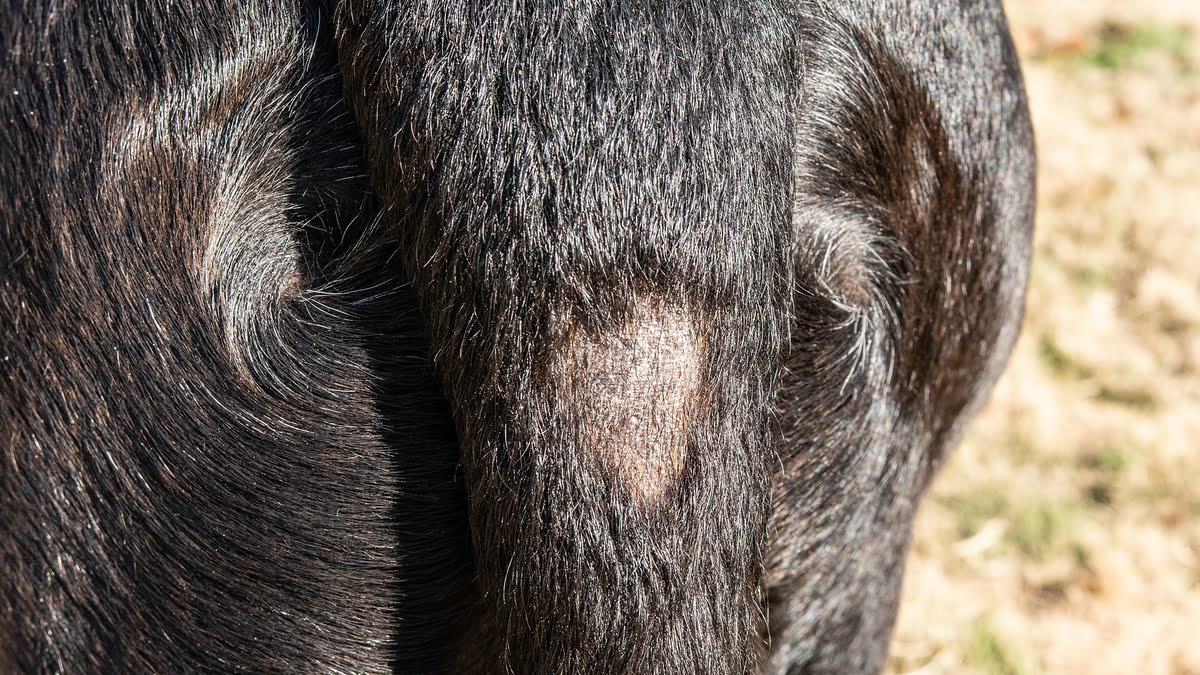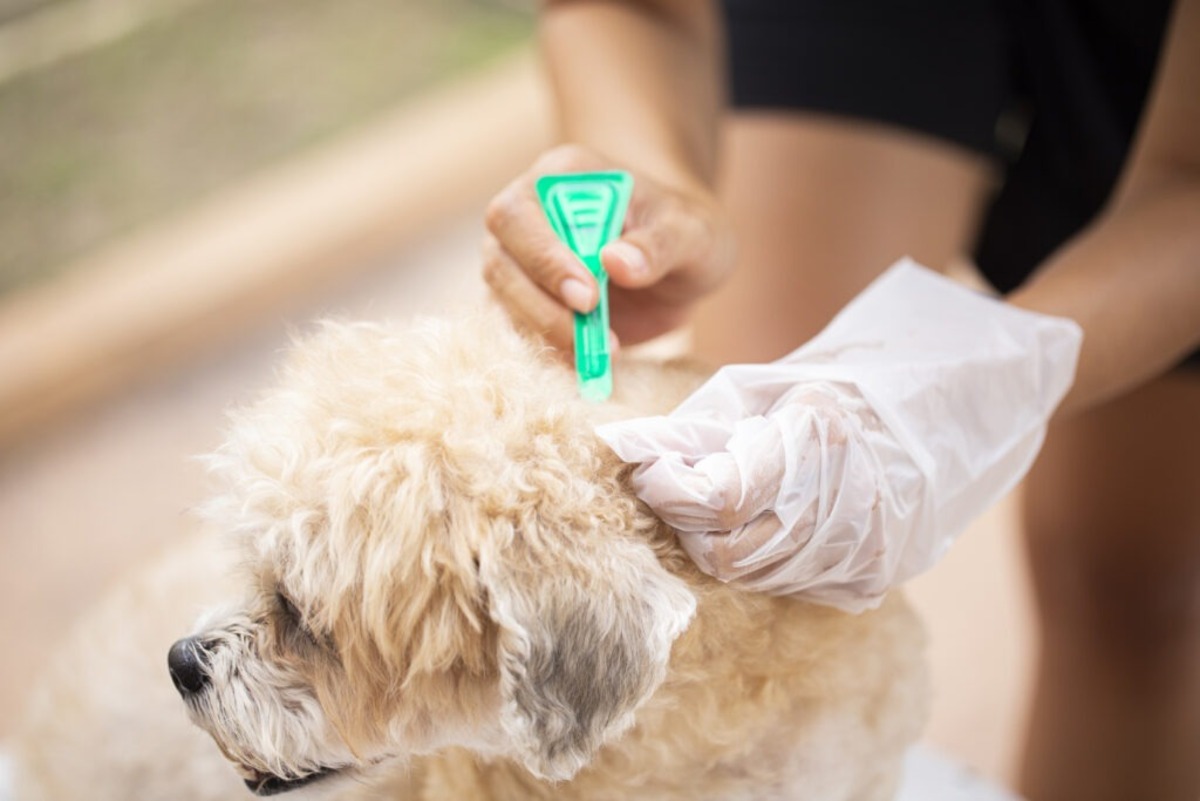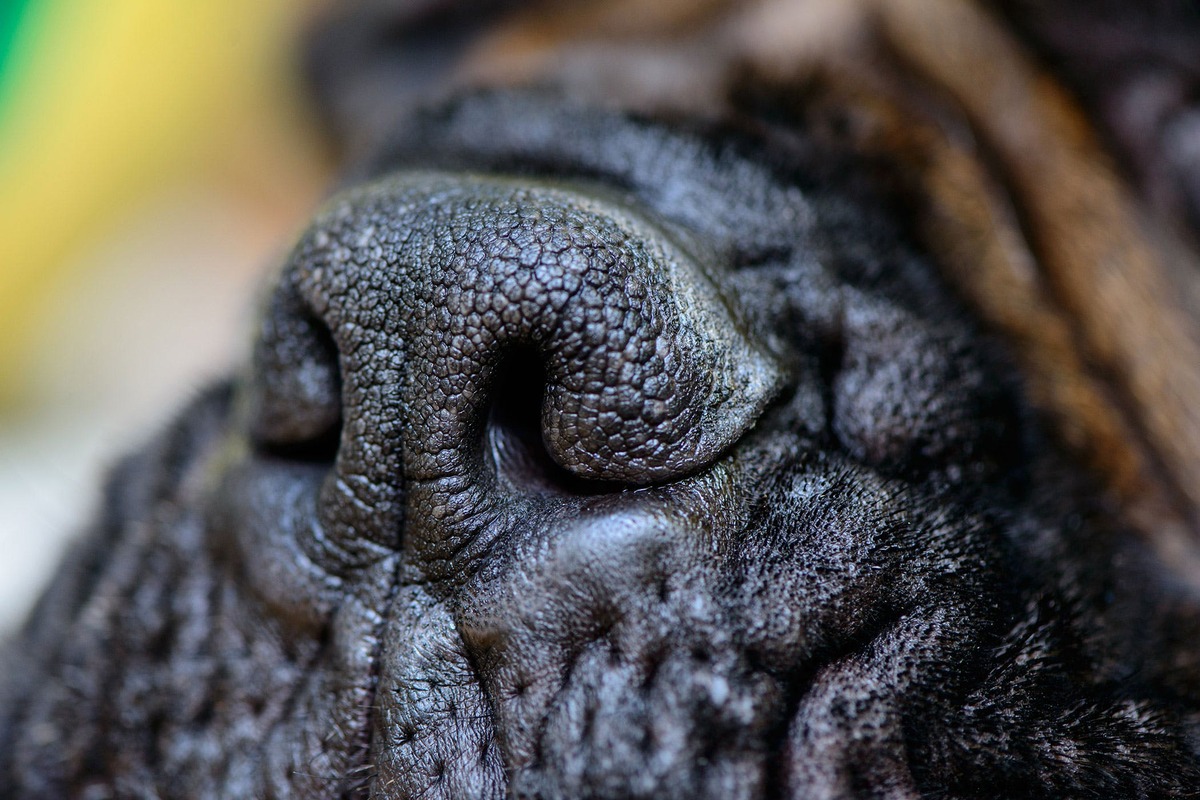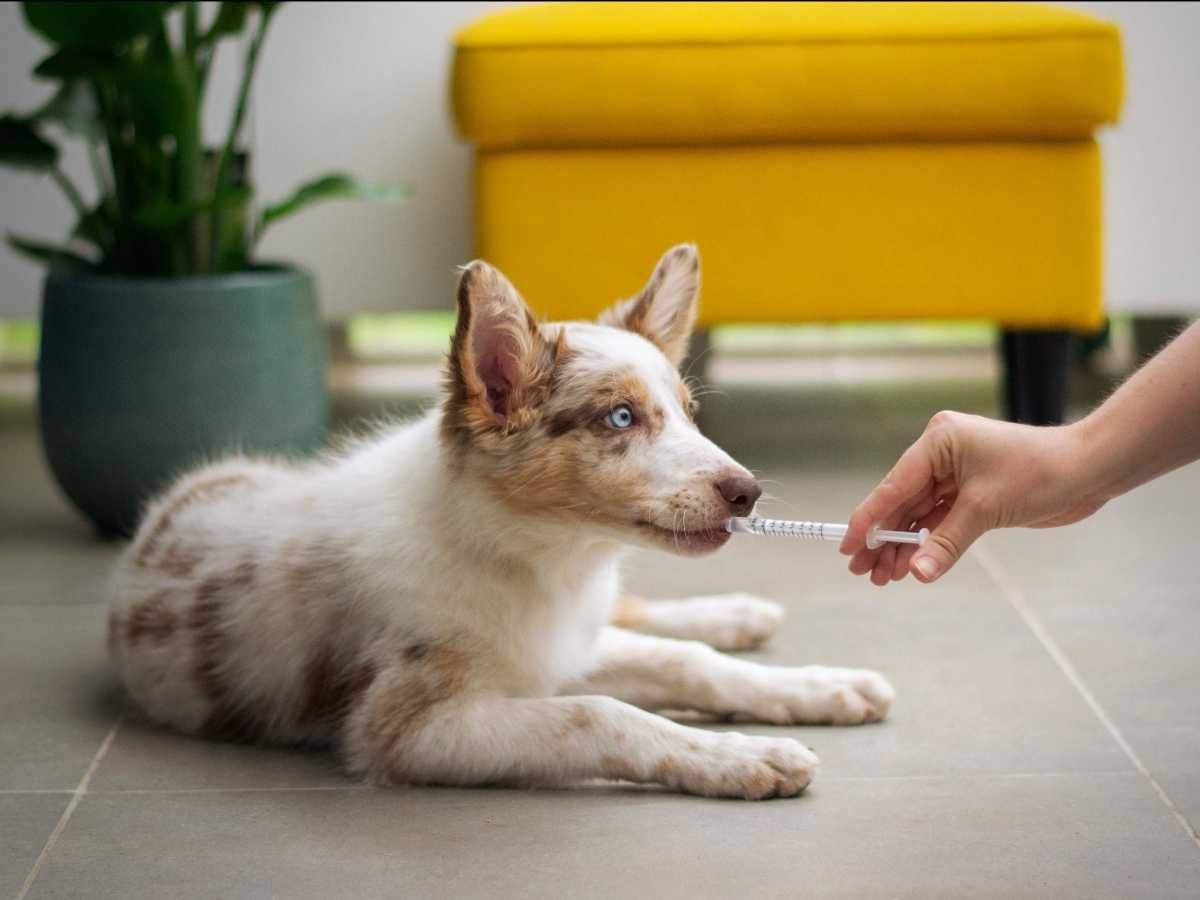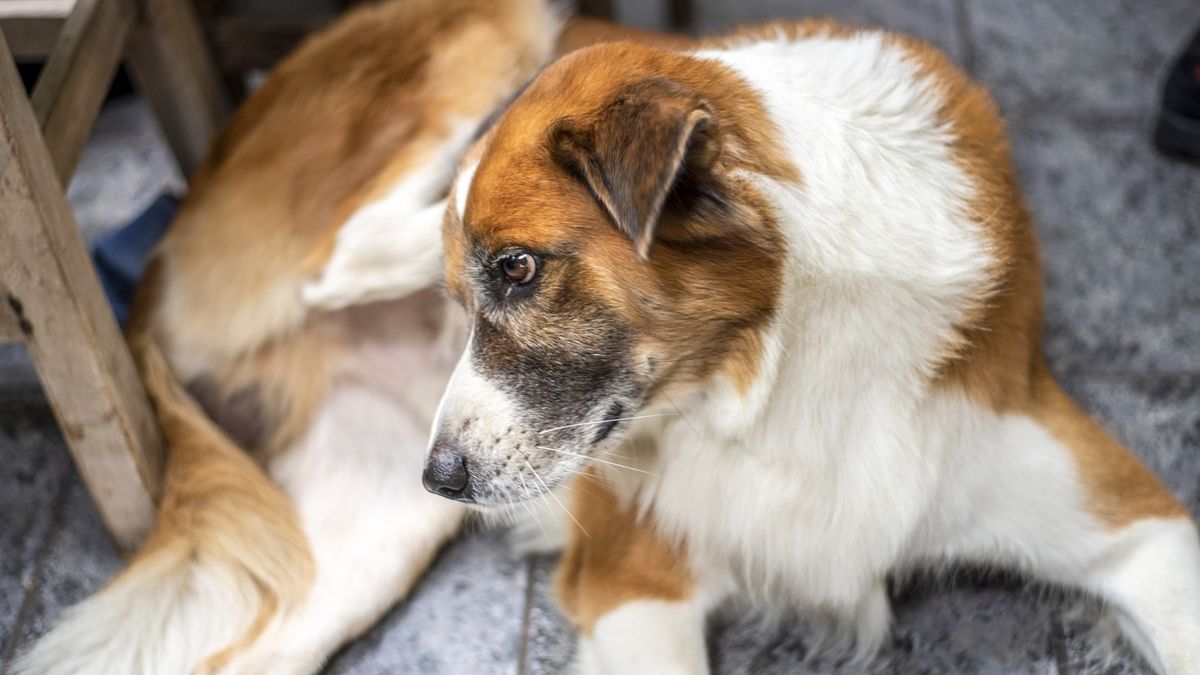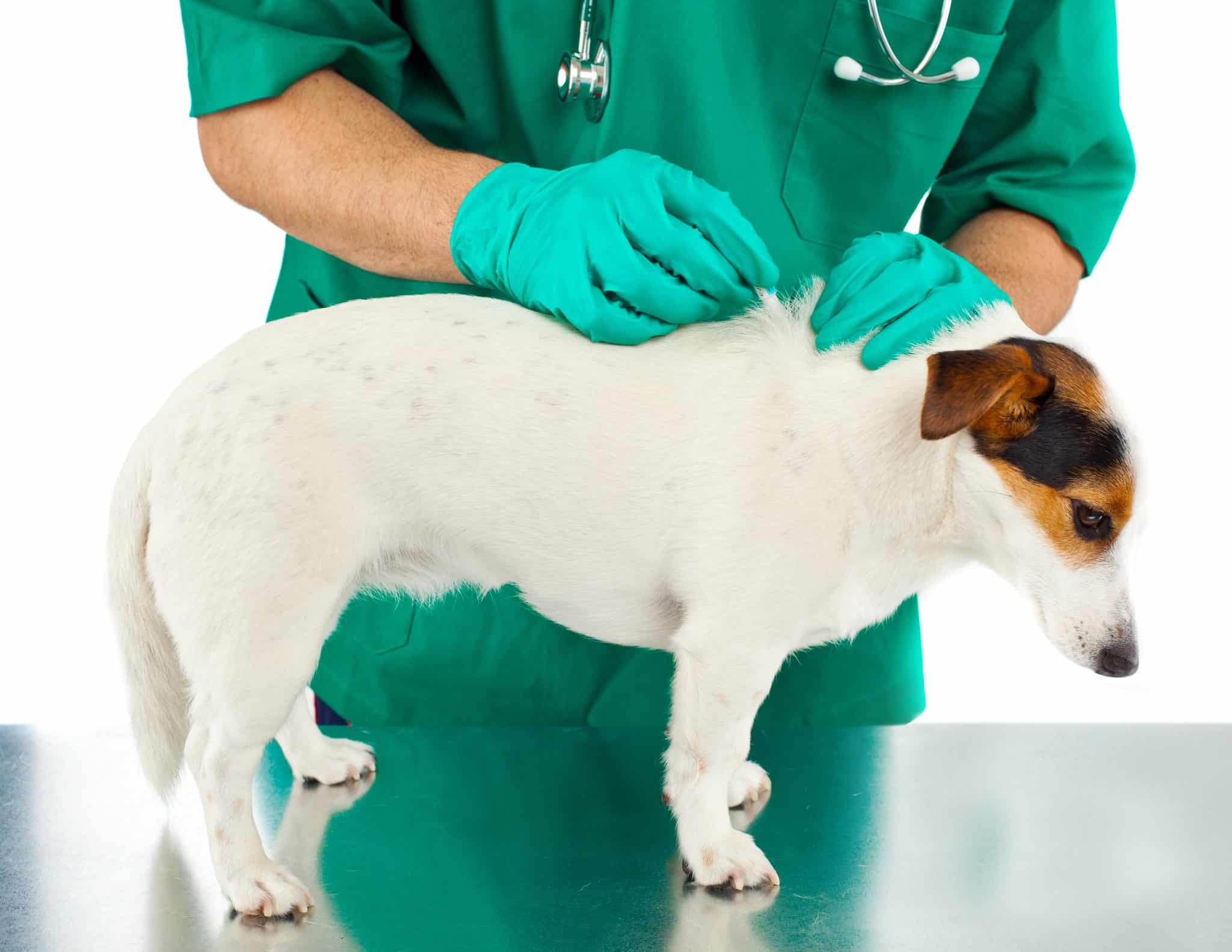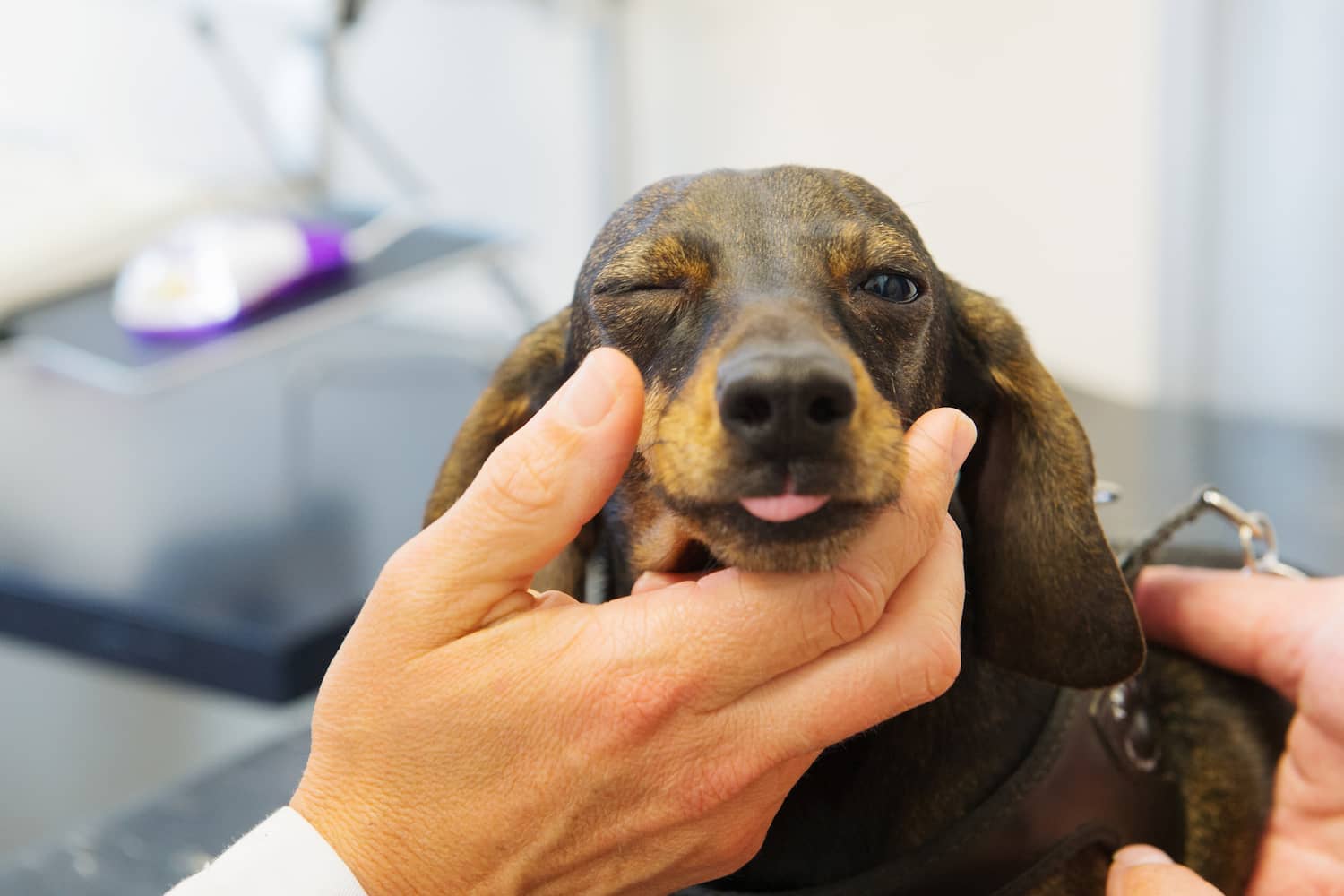Home>Health & Wellness>Common Health Issues>My Dog Has Fleas: What Are The Black Dots?
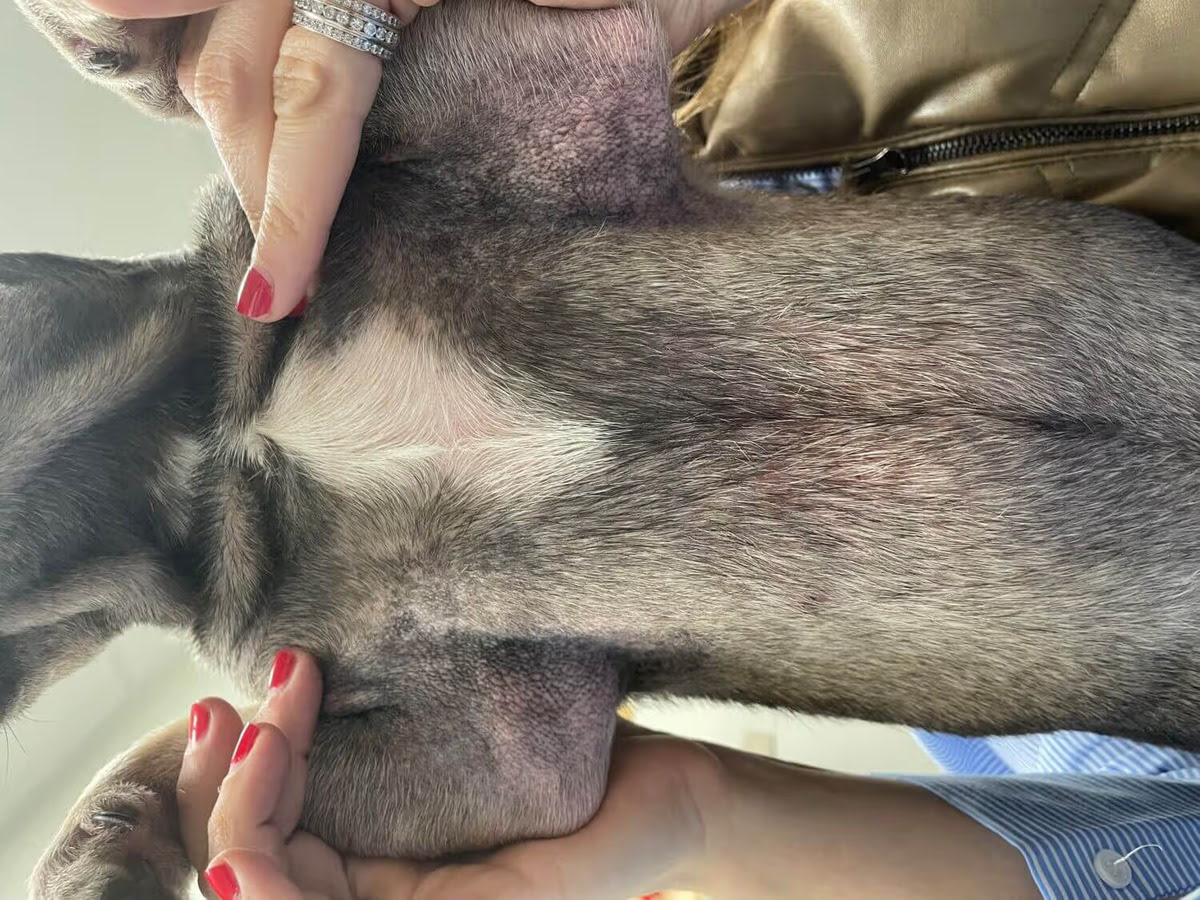

Common Health Issues
My Dog Has Fleas: What Are The Black Dots?
Modified: February 21, 2024
Learn about common health issues for dogs, including the significance of black dots and how to address them. Keep your furry friend healthy and happy!
(Many of the links in this article redirect to a specific reviewed product. Your purchase of these products through affiliate links helps to generate commission for Pawsomeoldies.com, at no extra cost. Learn more)
Table of Contents
Introduction
As a pet owner, witnessing your furry friend scratching incessantly can be distressing. One common culprit behind this behavior is fleas. These tiny, wingless parasites can wreak havoc on your dog's well-being, causing discomfort and potential health issues. Understanding the impact of fleas and the significance of the black dots they leave behind is crucial for maintaining your dog's health and happiness.
Fleas are more than just a nuisance; they are a persistent threat to your dog's comfort and health. These minuscule pests thrive by feeding on the blood of their hosts, leading to skin irritation, allergic reactions, and even anemia in severe cases. Moreover, the presence of fleas can also result in your dog developing flea allergy dermatitis, a condition characterized by intense itching and skin inflammation.
The black dots commonly found on your dog's fur are often a telltale sign of a flea infestation. These tiny specks, known as flea dirt or flea feces, are actually dried blood excreted by the fleas after feeding on your dog. Recognizing these black dots is crucial in identifying a potential flea problem and taking prompt action to alleviate your dog's discomfort.
In this article, we will delve into the world of fleas and their impact on dogs, shedding light on the significance of the black dots left behind. By understanding the implications of these pesky parasites and learning how to identify and address the black dots on your dog, you can take proactive measures to safeguard your pet's well-being. Additionally, we will explore effective strategies for treating fleas and black dots on your dog, as well as preventive measures to keep these unwelcome guests at bay in the future.
Join us on this insightful journey as we unravel the mysteries of fleas and black dots, empowering you to become a vigilant and proactive guardian of your dog's health and happiness.
Read more: Should I Shave My Dog Who Has Fleas?
Understanding Fleas and Their Impact on Dogs
Fleas, the minuscule yet mighty adversaries of our beloved canine companions, are more than just a nuisance. These tiny, wingless parasites belong to the order Siphonaptera and are adept at wreaking havoc on dogs' well-being. Their impact extends far beyond causing occasional itching; fleas can lead to a myriad of health issues for our furry friends.
When fleas infest a dog, they unleash a cascade of discomfort and potential health complications. These persistent pests sustain themselves by feasting on the blood of their hosts, triggering a range of adverse effects. The incessant itching resulting from flea bites can lead to skin irritation, redness, and hair loss, leaving dogs visibly distressed and uncomfortable. Moreover, some dogs may develop allergic reactions to flea saliva, exacerbating the itching and skin inflammation.
In severe cases, fleas can cause anemia in dogs, particularly in young puppies or older dogs with weakened immune systems. The loss of blood due to repeated flea feeding can lead to a decrease in red blood cell count, resulting in fatigue, weakness, and pale gums. Additionally, the presence of fleas can pave the way for the development of flea allergy dermatitis, a condition characterized by intense itching, skin lesions, and secondary infections.
Beyond the physical toll, fleas can also take a toll on dogs' emotional well-being. The persistent discomfort and itching caused by flea infestations can lead to behavioral changes, including restlessness, irritability, and decreased activity levels. This can significantly impact the overall quality of life for our canine companions, highlighting the far-reaching implications of flea infestations.
Understanding the profound impact of fleas on dogs is essential for pet owners, as it underscores the urgency of addressing and preventing flea infestations. By recognizing the signs of flea presence and taking proactive measures to protect our dogs from these pesky parasites, we can safeguard their comfort, health, and happiness.
In the next section, we will delve into the significance of the black dots left behind by fleas, shedding light on their role as a crucial indicator of flea infestations on dogs. Understanding these telltale signs is pivotal in identifying and addressing flea-related issues, empowering pet owners to take swift and effective action to alleviate their dogs' discomfort.
Identifying Black Dots on Your Dog
When it comes to identifying flea infestations on your dog, paying attention to the presence of black dots, often referred to as flea dirt, is paramount. These tiny specks, resembling grains of black pepper, can be found on your dog's skin and fur, serving as a crucial indicator of flea activity. Understanding how to spot and differentiate these black dots is instrumental in promptly addressing flea infestations and alleviating your dog's discomfort.
To identify black dots on your dog, start by thoroughly examining their fur, particularly in areas where fleas tend to congregate. Common hotspots for flea activity include the base of the tail, the abdomen, and the neck. Using a fine-toothed comb, gently comb through your dog's fur, paying close attention to any signs of black specks. Additionally, parting the fur and inspecting the skin beneath can reveal the presence of these telltale black dots.
Upon spotting the black dots, take note of their appearance and texture. Flea dirt typically resembles small, dark granules and may have a slightly gritty texture, similar to finely ground coffee. When moistened with water, flea dirt can leave behind reddish-brown streaks, as it is essentially dried blood excreted by the fleas after feeding on your dog. This distinctive characteristic sets flea dirt apart from regular dirt or debris, aiding in its identification.
Furthermore, observing your dog's behavior can provide valuable insights into the presence of black dots and potential flea infestations. If your dog exhibits excessive scratching, biting, or licking, particularly in areas where black dots are present, it is indicative of flea-related discomfort. Additionally, visible signs of skin irritation, redness, or hair loss in conjunction with the presence of black dots warrant immediate attention and further examination.
By familiarizing yourself with the appearance and characteristics of flea dirt, you can effectively identify and confirm the presence of fleas on your dog. This proactive approach enables pet owners to take swift action in addressing flea infestations, thereby mitigating the impact on their dog's well-being.
In the subsequent sections, we will delve into the significance of the black dots and explore their implications for your dog's health. Additionally, we will discuss effective strategies for treating fleas and black dots on your dog, as well as preventive measures to safeguard your pet from future flea infestations.
What Do the Black Dots Mean?
The presence of black dots, commonly known as flea dirt, on your dog's skin and fur holds significant implications for their well-being. These tiny specks, resembling grains of black pepper, are not merely a cosmetic nuisance; they serve as a crucial indicator of flea infestations and potential health risks for your canine companion.
When you spot these black dots on your dog, it signifies the presence of fleas and their active feeding on your pet's blood. Flea dirt is essentially dried blood excreted by the fleas after their blood meal, and its presence indicates an ongoing infestation. The accumulation of flea dirt on your dog's skin and fur not only points to the immediate discomfort caused by flea bites but also raises concerns about potential health complications.
The significance of black dots lies in their role as a tangible manifestation of flea activity, prompting pet owners to take swift and decisive action. Ignoring the presence of flea dirt can lead to exacerbation of discomfort for your dog, as well as an increased risk of health issues associated with flea infestations. Furthermore, the persistence of flea infestations can result in a cycle of continuous discomfort and potential skin-related complications for your dog, underscoring the urgency of addressing the underlying flea problem.
Moreover, the presence of black dots serves as a stark reminder of the environmental implications of flea infestations. Flea dirt, laden with dried blood, can accumulate in your dog's living spaces, including bedding, carpets, and furniture. This not only perpetuates the flea life cycle but also poses a risk of infestation to other pets in the household. Therefore, the identification of black dots on your dog should prompt comprehensive measures to address both the immediate infestation and the potential environmental impact.
Understanding the significance of black dots as a visible indicator of flea infestations empowers pet owners to take proactive steps in addressing these pesky parasites. By recognizing the implications of flea dirt and its role as a harbinger of potential health risks for your dog, you can prioritize their well-being and take decisive action to alleviate their discomfort.
In the subsequent section, we will delve into effective strategies for treating fleas and black dots on your dog, equipping pet owners with the knowledge and tools to address flea infestations and safeguard their dog's health and happiness.
Treating Fleas and Black Dots on Your Dog
Addressing flea infestations and the presence of black dots on your dog requires a comprehensive approach aimed at eradicating these pesky parasites and alleviating your pet's discomfort. Effective treatment strategies encompass both direct pet care and environmental management to ensure a thorough and lasting solution.
Read more: What To Do If A Dog Has Fleas In Its Ear
1. Flea Control Products:
Utilizing vet-recommended flea control products is a pivotal step in treating fleas and black dots on your dog. Topical spot-on treatments, oral medications, and flea collars are commonly prescribed by veterinarians to combat flea infestations. These products target adult fleas, disrupt their life cycle, and provide long-lasting protection against reinfestation.
2. Flea Bath and Grooming:
Giving your dog a soothing flea bath using a vet-approved flea shampoo can help eliminate adult fleas and flea dirt from their coat. Thoroughly combing your dog with a flea comb can aid in removing remaining fleas and black dots, providing immediate relief and reducing the flea population on your pet.
3. Environmental Treatment:
Addressing flea infestations goes beyond pet care; it involves treating your home environment to eradicate fleas at all life stages. Washing your dog's bedding, vacuuming carpets and upholstery, and using pet-safe flea sprays or foggers can help eliminate fleas and their eggs from your living spaces, preventing reinfestation.
4. Regular Cleaning and Maintenance:
Maintaining a clean and hygienic living environment for your dog is essential in preventing flea infestations. Regularly vacuuming and cleaning your home, particularly areas frequented by your pet, can help minimize the risk of flea infestations and reduce the presence of flea dirt in your surroundings.
5. Consultation with a Veterinarian:
Seeking guidance from a veterinarian is crucial in devising an effective treatment plan tailored to your dog's specific needs. Your veterinarian can recommend the most suitable flea control products, provide guidance on environmental management, and address any underlying health concerns related to flea infestations.
By implementing these comprehensive treatment strategies, pet owners can effectively combat flea infestations and eliminate the presence of black dots on their dogs. Taking proactive measures to treat fleas not only alleviates your pet's discomfort but also safeguards their health and well-being, allowing them to thrive in a flea-free environment.
In the subsequent section, we will explore preventive measures to safeguard your pet from future flea infestations, empowering pet owners to proactively protect their dogs from these persistent parasites.
Preventing Fleas and Black Dots in the Future
Preventing future flea infestations and the reappearance of black dots on your dog involves proactive measures aimed at creating an inhospitable environment for these persistent parasites. By implementing preventive strategies, pet owners can effectively safeguard their dogs from the discomfort and health risks associated with flea infestations.
1. Regular Flea Prevention:
Utilizing year-round flea prevention products recommended by veterinarians is essential in maintaining a protective shield against fleas. Topical spot-on treatments, oral medications, and flea collars provide ongoing defense, preventing flea infestations and the accumulation of black dots on your dog.
2. Environmental Maintenance:
Maintaining a clean and hygienic living environment is pivotal in preventing flea infestations. Regular vacuuming, washing pet bedding, and keeping indoor and outdoor spaces tidy minimizes the presence of fleas and their potential breeding grounds, reducing the risk of black dots reappearing on your dog.
Read more: What To Do When Your Dog Has Fleas
3. Regular Grooming and Inspection:
Frequent grooming sessions and thorough inspections of your dog's skin and fur enable early detection of potential flea activity. Using a flea comb during grooming can help identify and remove any stray fleas or flea dirt, preventing infestations from taking hold and sparing your dog from discomfort.
4. Outdoor Protection:
When venturing into outdoor environments, particularly in areas known for flea prevalence, consider using flea and tick preventive measures. Additionally, minimizing your dog's contact with wildlife and stray animals can reduce the risk of flea transmission, further safeguarding them from potential infestations.
5. Consultation with a Veterinarian:
Regular consultations with a veterinarian allow for tailored flea prevention plans based on your dog's specific needs and environmental factors. Your veterinarian can recommend the most effective preventive products and provide guidance on maintaining a flea-free environment for your pet.
By diligently implementing these preventive measures, pet owners can create a protective barrier against flea infestations and the presence of black dots on their dogs. Proactive flea prevention not only ensures your dog's comfort and well-being but also fosters a harmonious and flea-free living environment for both pets and their human companions.
Conclusion
In conclusion, the presence of black dots, commonly known as flea dirt, on your dog's skin and fur serves as a crucial indicator of flea infestations and potential health risks. Understanding the profound impact of fleas on dogs and the significance of the black dots they leave behind is essential for pet owners. By recognizing these telltale signs and taking proactive measures, pet owners can safeguard their dogs' well-being and create a flea-free environment.
The impact of fleas extends far beyond causing occasional itching; these tiny parasites can lead to a myriad of health issues for our furry friends. From skin irritation and allergic reactions to potential anemia and flea allergy dermatitis, the consequences of flea infestations are significant. The presence of black dots signifies ongoing flea activity and prompts pet owners to take swift and decisive action to address these pesky parasites.
Effective treatment strategies for combating fleas and black dots on dogs encompass both direct pet care and environmental management. Utilizing vet-recommended flea control products, implementing thorough grooming and environmental treatment, and seeking guidance from a veterinarian are crucial steps in addressing flea infestations. Additionally, preventive measures, including year-round flea prevention, environmental maintenance, and regular grooming, play a pivotal role in creating a protective barrier against future infestations.
By understanding the implications of flea dirt and the impact of fleas on dogs, pet owners can prioritize their dogs' well-being and take decisive action to alleviate their discomfort. The proactive approach to flea identification, treatment, and prevention empowers pet owners to create a harmonious and flea-free living environment for their beloved canine companions.
In essence, by unraveling the mysteries of fleas and black dots, pet owners can become vigilant guardians of their dogs' health and happiness. Through knowledge, proactive measures, and a deep understanding of the implications of flea infestations, pet owners can ensure that their dogs thrive in a comfortable and flea-free environment, free from the distress caused by these persistent parasites.
